As much as AMD and Intel fan boys, like to scream at each other online, the average user would be hard pressed to notice the difference between these companies' CPUs in everyday use, unless you're like us and benchmark things religiously. But on the inside, modern chips from Team Red and Team Blue are built quite differently. So let's take a look at how starting with AMD.
Ryzen CPUs are made up of at least one core complex, or CCX, but don't worry. Despite the name, it's not a complex thing to understand. 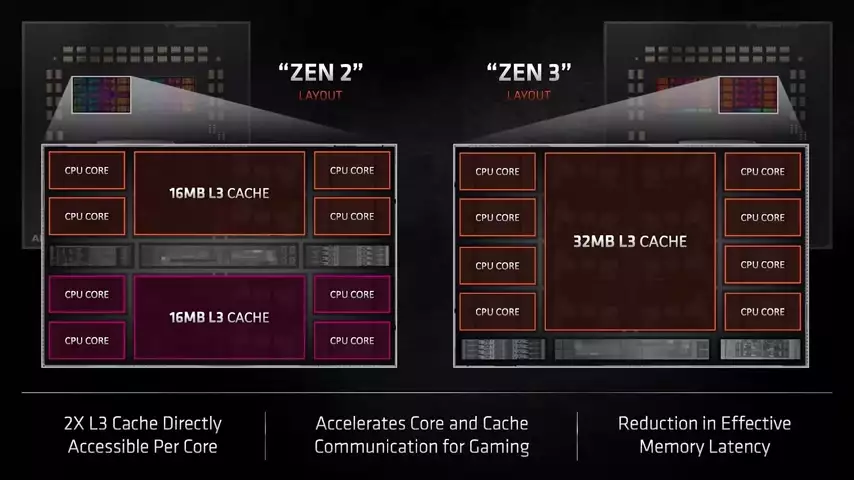 A CCX is just a group of cores along with some cache memory. Newer Zen 3 chips have CCXs with eight cores, while Zen 2 CPUs have four cores per CCX.
A CCX is just a group of cores along with some cache memory. Newer Zen 3 chips have CCXs with eight cores, while Zen 2 CPUs have four cores per CCX.
Each CCX lives on a chiplet called a CCD. The setup on Zen 3 is pretty straightforward.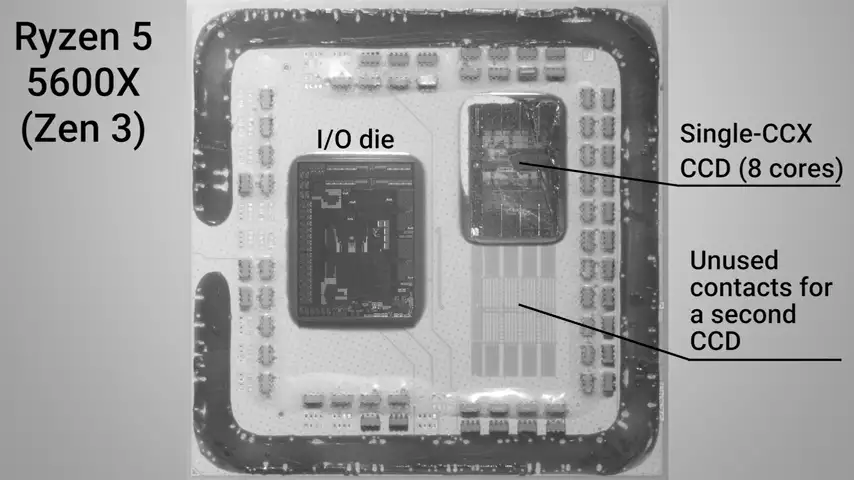 One CCX per CCD with up to two CCDs per processor for a total of 16 cores.
One CCX per CCD with up to two CCDs per processor for a total of 16 cores. 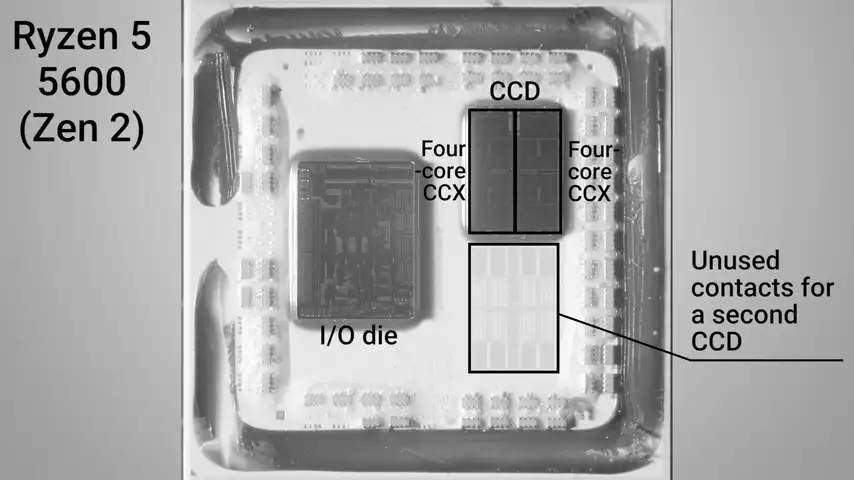 On Zen 2, each CCD can instead hold two of these smaller CCXs, resulting in the same 16 core maximum.
On Zen 2, each CCD can instead hold two of these smaller CCXs, resulting in the same 16 core maximum.
But what links all these core complexes together? Well, you've probably heard of AMD's Infinity Fabric which is their secret sauce bus that can run between CCXs or between CCDs.
Although it's a high speed interconnect that works pretty well, with Ryzen beating out competing Intel chips in a good number of benchmarks, it's still not as fast as having the cores more directly connected, as there's higher latency with Infinity Fabric, and the connection is serial rather than parallel.
But there are real benefits to this approach. One is that the smaller chiplets mean big cost savings due to better yield. If one chiplet is bad, you can discard just that one chiplet without wasting as much silicon from throwing away a whole CPU.
This CCX plus Infinity Fabric approach, also scales quite well. So you can just add more chiplets if you need more cores instead of spending more time and money designing a whole new chip.
Intel, in contrast to AMD, still uses monolithic chip designs, where cores are right next to each other, at least for the time being. 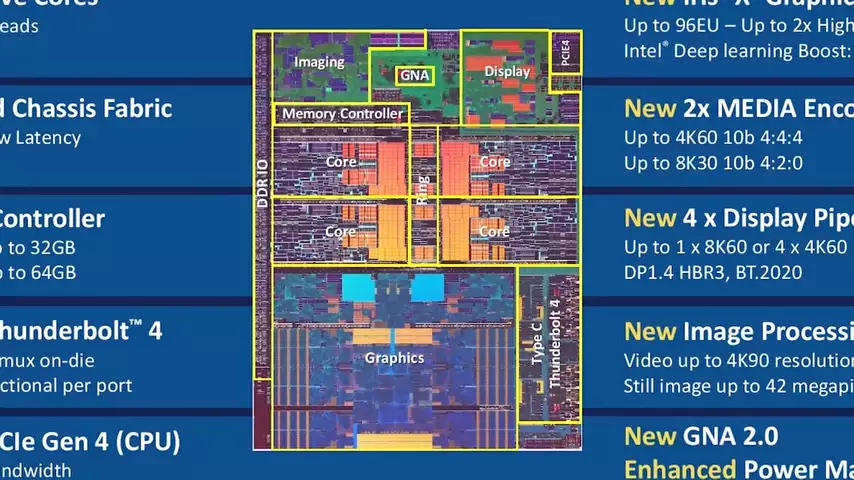 This approach allows the cores to talk with each other more directly, but it has the opposite problems as AMD's chiplet design, lower yield, less scalability, and higher cost.
This approach allows the cores to talk with each other more directly, but it has the opposite problems as AMD's chiplet design, lower yield, less scalability, and higher cost.
But team blue isn't going to be left behind as the industry moves towards chiplets, except they call them tiles instead, because they just had to be different.
In 2023, we're expecting a lineup of mainstream processors called Meteor Lake, based on tiles connected by something called EMIBs, which unfortunately, is a way less cool name than Infinity Fabric. In fact, we've already seen EMIBs in the Kaby Lake G processors from a few years ago, which used EMIBs to connect the builtin Radeon GPU to its HBM memory, as well as in Intel's Ponte Vecchio super computer chips. Intel thinks it's a more elegant solution to AMD's, even going so far as to drop a not so subtle, "Star Wars" reference to it on its website.
In fact, we've already seen EMIBs in the Kaby Lake G processors from a few years ago, which used EMIBs to connect the builtin Radeon GPU to its HBM memory, as well as in Intel's Ponte Vecchio super computer chips. Intel thinks it's a more elegant solution to AMD's, even going so far as to drop a not so subtle, "Star Wars" reference to it on its website.
And to be fair to them, they might be right. Instead of having a big old slab of silicon that the chiplets all sit on, an EMIB is a much smaller piece of silicon that connects tiles on either side. Not only do you need less silicon, which keeps costs lower, but it's also even easier to scale. Instead of being limited by the size of your expensive silicon underlayer, you can just use multiple EMIBs to build outward. 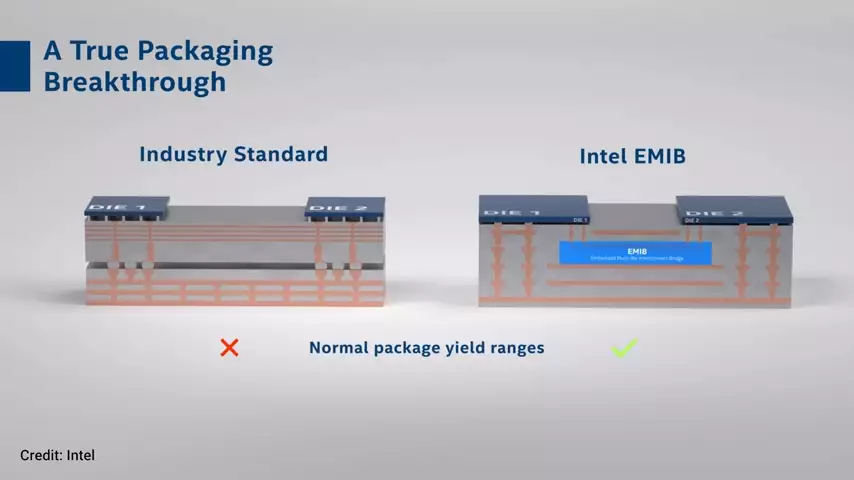 It's a little bit like how the tiles that make up a modern basketball court snap into place. And unlike Infinity Fabric, EMIBs move data in parallel, giving them higher bandwidth, while at the same time offering lower latency with less power loss, according to Intel anyway.
It's a little bit like how the tiles that make up a modern basketball court snap into place. And unlike Infinity Fabric, EMIBs move data in parallel, giving them higher bandwidth, while at the same time offering lower latency with less power loss, according to Intel anyway.
But there are still probably limits on just how many of these tiles you can put together. As a setup that's too large could start hitting a thermal ceiling.
Intel also has another method to connect chiplets called Foveros, which involves stacking chips on top of each other. 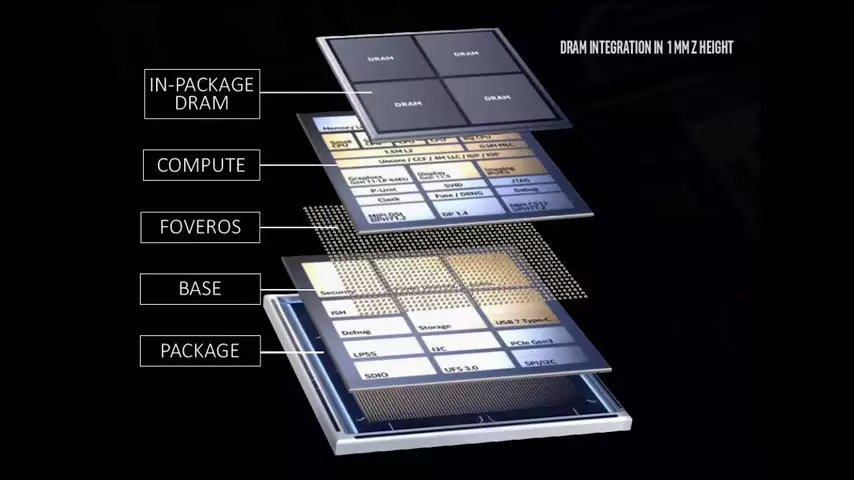 But this hasn't seen much adoption in the consumer space yet. Only a couple of laptops that were released in 2020 feature Foveros chips, and that specific lineup called Lakefield was discontinued due to poor demand.
But this hasn't seen much adoption in the consumer space yet. Only a couple of laptops that were released in 2020 feature Foveros chips, and that specific lineup called Lakefield was discontinued due to poor demand.
However, the idea of chip stacking is something that Intel seems committed to for its future. But even though both Intel and AMD are trying to break up the classic, monolithic chip design, don't expect it to go away completely. These fancy methods of linking chiplets together do cost money. So, at the lower end of the market, simpler monolithic designs for systems that don't need tons of computing muscle, we'll be with us for quite some time.
In case you have found a mistake in the text, please send a message to the author by selecting the mistake and pressing Ctrl-Enter.
ncG1vNJzZmislZi1sbjAp5ytZqSksaLFjqmmrKxfqbWmecCcq66ZnGKxqrLFnqmeppOaeqOx07CcnqZdnru1sctmmKecXZa6pX0%3D